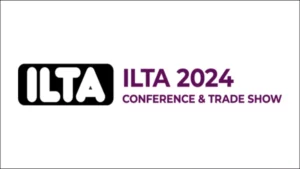Author: Ing. Euclides Quiñonez, October 4, 2023
Introduction
The oil industry is one of the organizations most exposed to great risks, which is why it is subject to compliance with a series of very strict international regulations. It is also considered that if the products processed and generated by this industry are managed inadequately, they can cause considerable damage to the environment, people and their assets, leaving them exposed to legal sanctions.
To safely operate hydrocarbon facilities, a high level of operational integrity and good practices with a high level of safety are needed, for which quality audits help ensure that operations and processes comply with regulations to avoid events. catastrophic events and legal sanctions.
The main objective of this article is to explore the advanced practices and tools used in oil industry quality audits. Special attention will be paid to how these practices and tools contribute to maintaining high quality standards in such a challenging environment.
Related topics
Aunque el tema que nos ocupa el las auditorias de calidad, es importante definir y clarificar los conceptos de: la gestión de calidad, el control de calidad y la auditoría de calidad. Estos son conceptos relacionados, pero tienen enfoques y objetivos diferentes en el contexto de la mejora de la calidad en una organización. A continuación, una breve descripción de cada uno para evitar confusiones:
Quality management:
- Approach: Strategic and long-term.
- Objective: Establish policies, processes and procedures to ensure that quality is an integral aspect of all the organization’s operations.
- Responsibility: Must be led by senior management and incorporated into the organization’s culture.
- Activities: Strategic planning, establishment of quality objectives, process design, human and material resources management, data-based decision making, continuous improvement.
QA:
- Approach: Tactical and short term.
- Objective: Evaluate and verify the quality of a product or service during its production or service provision to ensure that it meets established standards.
- Responsibility: These are usually the responsibility of operational teams, reliability engineering, equipment inspection.
- Activities: Inspection, testing, sampling, process monitoring, real-time defect correction, ensuring that products or services meet specifications.
Quality audit:
- Approach: Independent and retrospective evaluation.
- Objective: Examine and evaluate quality management systems and processes to ensure their compliance with established standards, regulations and policies.
- Responsibility: Carried out by internal or external auditors, but independent of the audited processes.
- Activities: Document review, interviews, observation of processes, identification of non-conformities, issuance of audit reports, recommendations for improvement.
To avoid confusion, it is important to be clear about the distinction between these concepts and how they relate to each other. Quality management is the basis on which quality control is established and auditing is performed to ensure conformity and continuous improvement.
What is quality audit?
Audit is defined as the verification activity of a systematic, independent and documented process to obtain evidence from records, statements of fact or other information that is relevant and verifiable and evaluate it objectively to determine the extent to which procedures or requirements are met to ensure that there are high quality standards throughout the organization.
An audit can apply to an entire organization or can be specific to a function, process, or production step. Some audits have special administrative purposes, such as auditing documents, risks or performance, or tracking completed corrective actions.
Quality audits have a great role motivated by the momentum that certification has acquired in recent years. This has led to the international standardization organization (ISO) developing standards and guides on the methodology of quality audits such as ISO 19011 (Guidelines for the audit of quality and environmental management systems), in addition to the requirement to carry out internal audits of the quality management system, established in ISO 9001 (Quality management systems) and ISO 14011 (Guide for audits of quality or environmental management systems).
Types of audits according to the objective
- Process audit: Verifies that processes are operating within established limits. Evaluates an operation or method against predetermined instructions or standards to measure compliance with these standards and the effectiveness of the instructions.
- Product audit: As its name indicates, it checks the quality of the product or service to determine if it meets the customer’s specifications or needs. Thus, specifications, customer requirements and their complaints are the focus of the auditor’s attention.
- System audit: Performed on a management system. It can be described as a documented activity performed to verify, through examination and evaluation of objective evidence, that the applicable elements of the system are appropriate and effective and have been developed, documented and implemented in accordance with specified requirements.
Types of audits according to the auditor
- Internal audit: It is carried out by an internal auditor who works for the organization itself and evaluates the management system in relation to the specified requirements. The objective of the internal audit is to identify and evaluate opportunities for improvement in the management system.
- External audit: It is carried out by an independent auditor who works for an external audit organization and evaluates the management system against the specified requirements. The objective of the external audit is to provide an accreditation, a certificate or an independent assessment of the conformity of the management system of the audited organization.
- Certification audit: Can only be performed by auditors who belong to an ISO-accredited certifying body. An organization faces this type of audit when it has implemented a Quality Management System based on the ISO 9001 standard, and expects to certify it or validate the certification every three years. The ISO/IEC 17021-1 standard provides a series of requirements for the audit of management systems for third-party certification.
How to perform an audit
To conduct an efficient audit, prior planning must be carried out to ensure that the audit process is effective and efficient. In the oil industry, where operations are complex and risky, proper planning is essential. Here are some of the best practices and tools used in this process:
- Identification of Objectives and Scope: The first step is to define the scope and objectives of the audit, which must be aligned with the strategic goals and priorities of the organization. Tools such as risk matrices help prioritize critical areas. The scope should specify which aspects of the process, product or service will be audited, such as inputs, outputs, activities, resources, documentation or performance indicators. The objectives should state what the audit aims to achieve, such as verifying compliance, evaluating effectiveness, identifying best practices, or recommending improvements.
- Selection of a Team of Competent Auditors: A team of competent auditors is essential to the success of the audit. Additionally, ongoing training and certification are common practices to maintain audit team competency.
The audit team must be familiar with the relevant quality and safety standards, as well as the specific processes of the oil industry. This team must also be made up of qualified and competent auditors who have the relevant knowledge, skills and experience to perform the auditory. Audit criteria should define the standards, regulations, or customer requirements that will be used to evaluate the process, product, or service.
- Risk assessment: Risk identification and assessment are essential to ensure security during the audit. Tools such as risk analysis are used to determine potential threats and take preventive measures.
- Plan and prepare the audit: The next step is to plan and prepare for the audit, which involves developing an audit plan, an audit checklist, and an audit sampling strategy. The audit plan should describe the scope, objectives, criteria, equipment, methods, and reporting procedures of the audit. The audit checklist should list the specific questions, evidence, and observations that will be used to evaluate the audit criteria. The audit sampling strategy should determine the sample size, selection, and analysis methods to be used to ensure that the audit results are representative and reliable. The audit plan should include a detailed agenda, assignment of tasks, collection of relevant documents and definition of evaluation criteria. Project management tools, such as scheduling software, make it easy to create and track the plan.
- Perform the audit: Collect and analyze audit evidence, evaluate the audit findings, and report the audit results. Audit evidence should be obtained through various methods, such as interviews, observations, document reviews, or tests. The audit findings should be compared to the audit criteria and any nonconformities, strengths or weaknesses should be identified and recorded. The audit results should be summarized in an audit report, which should include the audit scope, objectives, criteria, equipment, methods, findings, conclusions, and recommendations.
- Identify findings and non-conformities: Record any findings of non-compliance with regulations or non-compliance with quality standards and classify them by their severity and urgency.
- Communicate results: Present the results of the audit to senior management and the management team. Provides documented evidence of findings and nonconformities.
- Develop a final action plan: Work with the audited team to develop an action plan to address nonconformities and findings by establishing clear timelines and responsibilities.
- Issue a final report: Prepare a final report that includes the results of the audit, the action plan and recommendations. Delivery of the report to senior management and all relevant stakeholders.
- Audit Closing: Formalize the closing of the audit and ensure that all necessary measures have been taken to ensure quality and safety in the oil industry.
- Audit follow-up: The last step is to follow up on the audit, which involves verifying the implementation and effectiveness of any corrective or preventive actions agreed upon or recommended by the audit. Follow-up activities should be based on the audit report and should include monitoring, reviewing or re-auditing the process, product or service to ensure that non-conformities have been resolved and improvements have been sustained. Monitoring activities should also provide feedback to the auditee and other interested parties on the outcome of the audit and the progress of improvement.
Tools and technology applied to support quality audits
- Data Management Systems: Data management systems centralize quality-related information and facilitate tracking and reporting. These systems are often supported by data analytics technologies, such as Big Data, Machine Learning, Artificial Intelligence (AI), ISOTools Software, and Six Sigma, among others, which can identify hidden patterns and trends in large data sets.
- Virtual audits: Virtual audits allow auditors to conduct inspections and evaluations remotely using video conferencing and augmented reality technologies. This has proven especially useful in emergency situations, such as the COVID-19 pandemic, when in-person audits were difficult to carry out. These audits can record visual evidence in real time and facilitate collaboration between experts around the world.
- Digital audits and Blockchain: Blockchain technology is a very useful tool in quality management in the oil industry to guarantee the integrity and traceability of data. Blockchain-based digital audits can securely record audit results and provide an immutable chain of custody. This is especially relevant to ensure regulatory compliance and reporting quality.
Regulatory compliance and certifications
The oil industry is subject to a wide range of regulations and standards, both nationally and internationally. Maintaining regulatory compliance is essential to avoid sanctions and operational risks. Quality audits play a highly relevant role in verifying regulatory compliance and obtaining certifications, such as ISO 9001 (Quality Management Systems), ISO 14001 (Environmental Management) or ISO 45001 (Quality Management Systems). security and health at work). In the case of the oil, petrochemical and natural gas industry, the ISO 29001 standard was developed, which is complementary to ISO 9001.
Conclusions
Quality audits are an indispensable part of quality management in the oil industry. The implementation of advanced practices and technological tools has significantly improved the efficiency and effectiveness of these audits. From planning to data management and regulatory compliance, oil companies are taking innovative approaches to ensure high and consistent quality standards.
The continued commitment to quality and safety is essential to the success and sustainability of the oil industry in a constantly evolving world. As technology continues to advance, we are likely to see new tools and approaches that continue to improve quality audits in this critical industry.
The combination of advanced practices and technological tools is driving excellence in quality audits for the oil industry, ensuring that it continues to provide high-quality products and services while meeting the highest standards of safety and regulatory compliance.


























